Flock BronzewingFlock Bronzewing – male Flock Bronzewing – flight
One of the most nomadic of Australian pigeons, the Flock Bronzewing (Phaps histrionica) are endemic to the more arid parts of Australia. Whilst they are observed in a variety of habitats including grassy plains, spinifex, saltbush and mulga, they appear to prefer tussock grassland areas. As they have a need for water, they can be seen near pools of water, stock tanks and bore drains.
A highly nomadic species, the “flock” part of their name came from that in the 1930s they were seen in large flocks of up to 100,000 birds. These days, those numbers are rare.

The adult male of the species have a black head with a white forehead, a white line that runs from behind the eye that almost encloses the ear coverts (that forms a broken ring). The iris is dark brown and they have a white patch on the lower throat, and reddish sandy brown upperparts and wings. They have a black bill. The primary coverts and alula are grey with white margins. The alula is the small freely moving first digit, also referred to as the bird’s “thumb”, that has three to five small flight feathers, depending on the species. The primaries (which are the flight feathers on the outer half of the wing) are grey with chestnut inner webs; all but the outer three are tipped white.
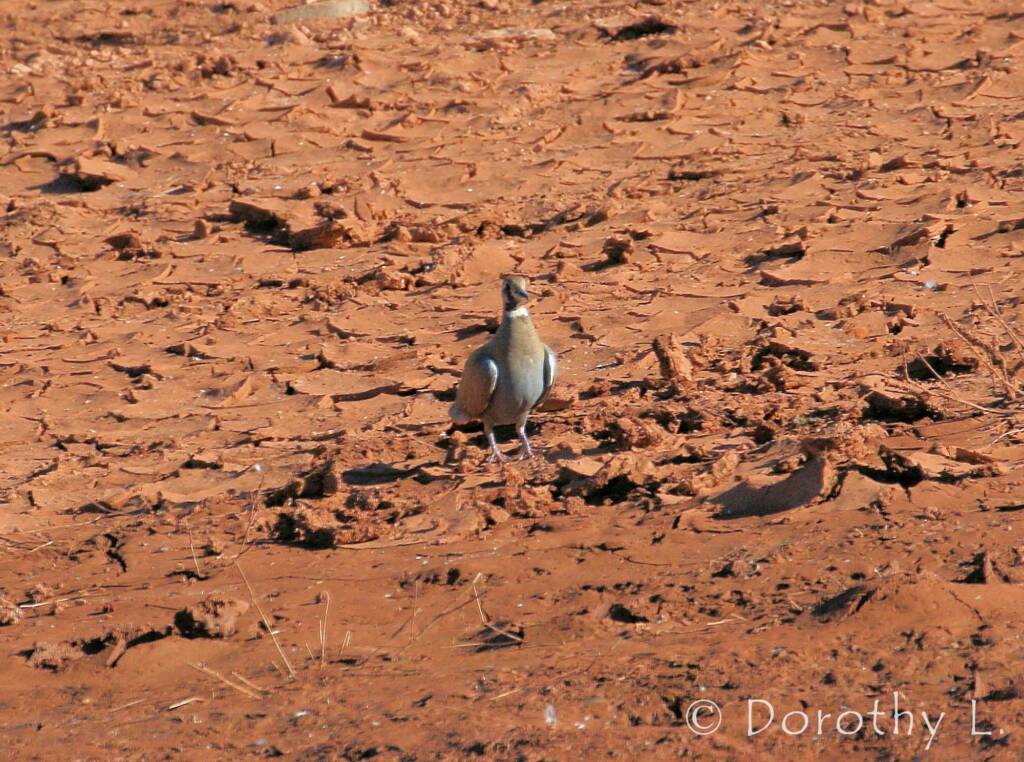
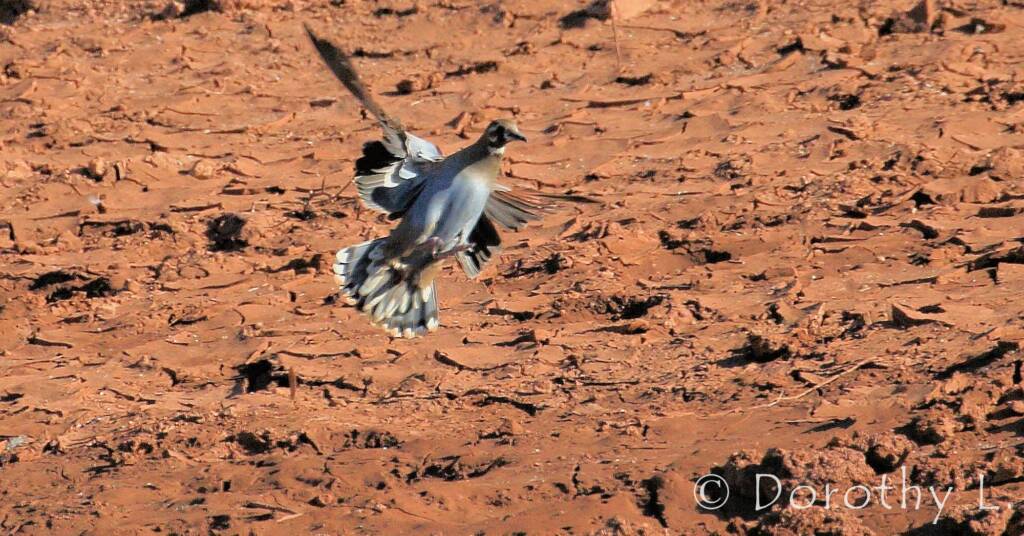
In the adult female bird, the crown and the forehead are sandy-brown. The female bird has a white chin (occasionally black), and the face and throat markings are dull in colour compared to the male. There is a sandy-brown section across the neck and another difference between the sexes is that the primaries are not tipped white.
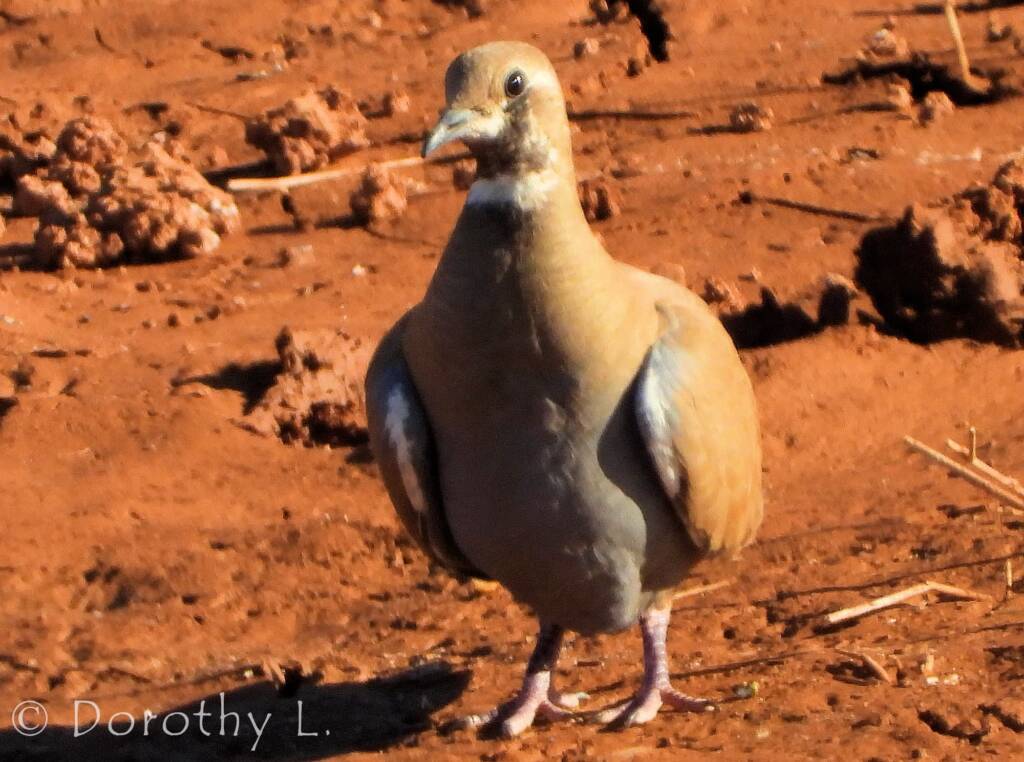
The Flock Bronzewing rest on the ground during the day. Their nest is a simple scrape on the ground in the cover of a bush, grass tussock or in on bare ground around bores, often close to others of the same species.



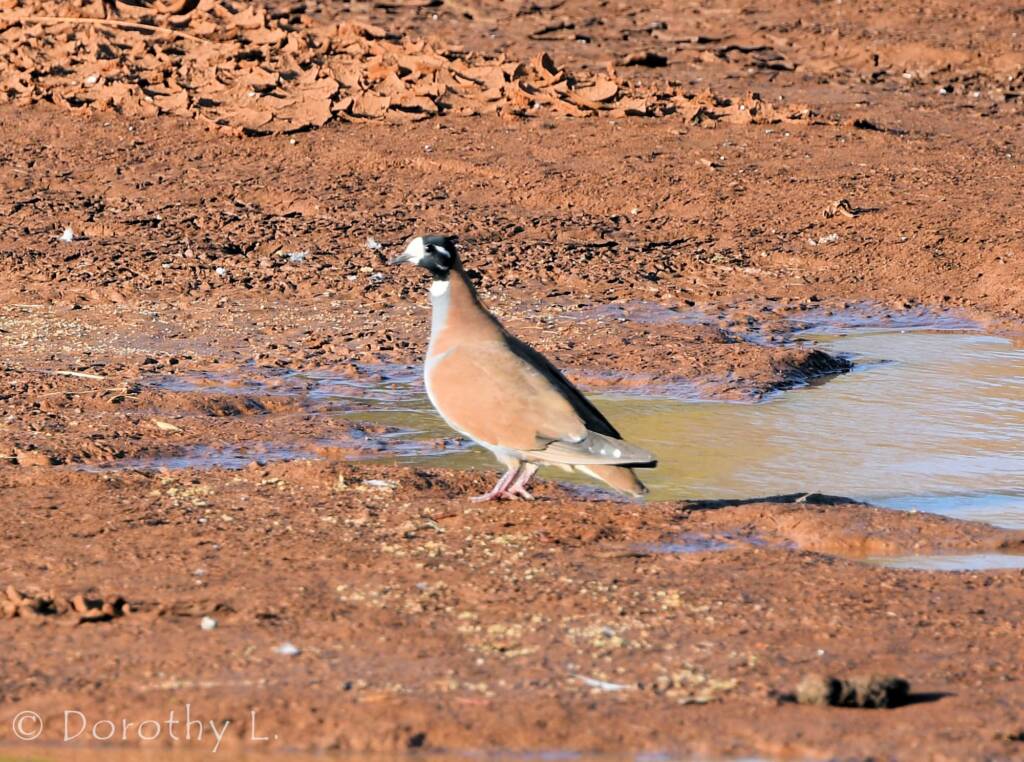
Common name
Flock Pigeon, Harlequin Bronzewing, Harlequin Pigeon.

- Scientific classification
- Kingdom: Animalia
- Phylum: Chordata
- Subphylum: Vertebrata
- Informal: Gnathostomata
- Class: Aves
- Order: Columbiformes
- Family: Columbidae
- Subfamily: Phabinae
- Genus: Phaps
- Subgenus: Phaps (Histriophaps)
- Species: Phaps histrionica
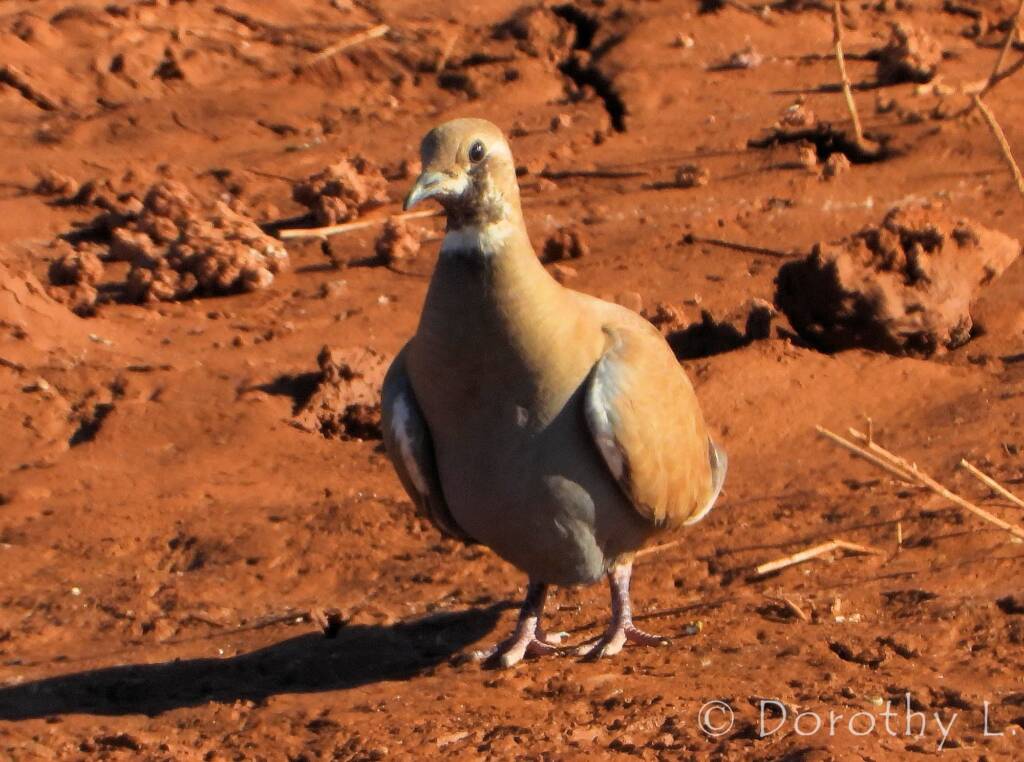
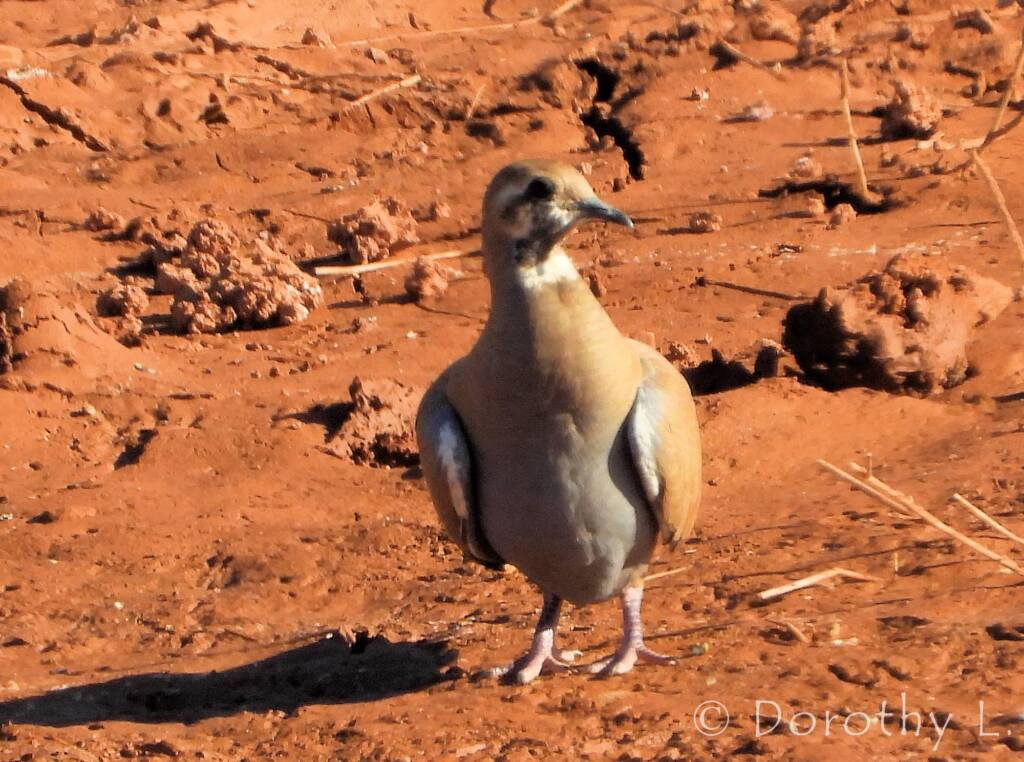
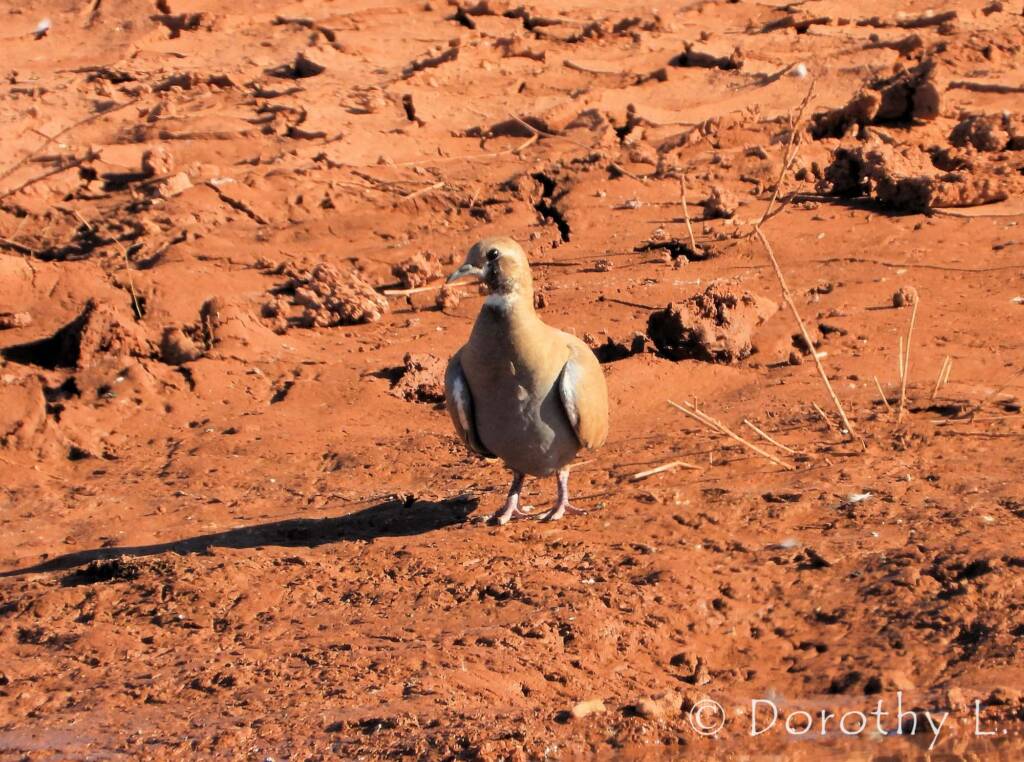
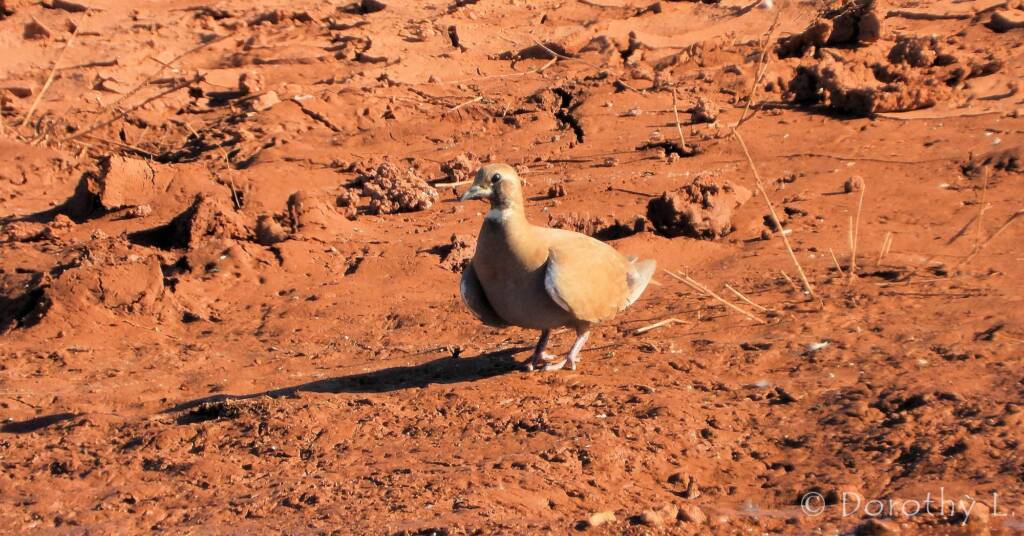

Footnote & References
- Flock Bronzewing – profile, NSW Government, Office of Environment & Heritage, https://www.environment.nsw.gov.au/threatenedSpeciesApp/profile.aspx?id=10612
- Flock bronzewing, https://en.wikipedia.org/wiki/Flock_bronzewing (last visited May 24, 2021).
- Flock Bronzewing, eBird, https://ebird.org/species/flobro1
- Flock Bronzewing, mdahlem.net, https://www.mdahlem.net/birds/11/fbrwing.php
- Phaps (Histriophaps) histrionica (Gould, 1841), Flock Bronzewing, Atlas of Living Australia, https://bie.ala.org.au/species/https://biodiversity.org.au/afd/taxa/6bad7265-c461-403b-ab33-60ccae48e70f
Flock BronzewingFlock Bronzewing – male Flock Bronzewing – flight
Doves & PigeonsCommon Bronzewing Common Bronzewing – reflections Crested Pigeon Crested Pigeon – water Crested Pigeon – iridescence Crested Pigeon – roosting Crested Pigeon – mixed company Diamond Dove Flock Bronzewing Flock Bronzewing – male Flock Bronzewing – flight Spinifex Pigeon Spotted Dove (Spilopelia chinensis)
